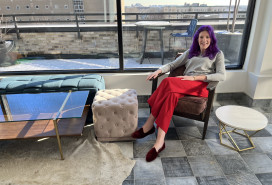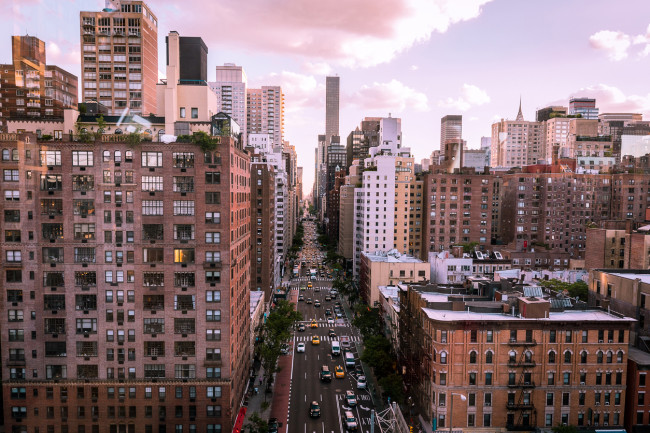I’m priced out of my NYC neighborhood. What are my options?
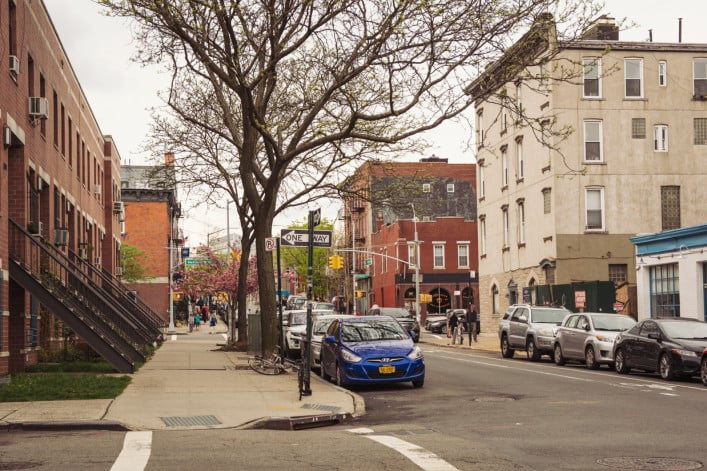
Williamsburg used to be the place New Yorkers went when they were priced out of Manhattan—now people are being priced out of there too.
iStock
Living in NYC has plenty of challenges, chief among them coming up with the funds and space to maintain your sanity. Apartments in desirable neighborhoods are small and expensive. For many New Yorkers, parts of the city are now unaffordable and off limits, even when they have lived there for years. For families in particular, the pressure is acute.
If you’re crowded into a tiny apartment and are thinking about what comes next, you're in good company.
“It feels like if you weren’t smart or wealthy enough to buy something just after 2008, you are out of luck,” says one Park Slope renter, who adds, “My husband and I are both freelance workers and we are totally priced out of this neighborhood.”
Displacement is a pressing issue for communities especially as neighborhoods get rezoned. Elizabeth Kee, a real estate broker with CORE, lived in a rent-stabilized apartment on the Lower East Side several years ago and saw development and infrastructure upgrades start to transform the neighborhood. Initially, she was excited by the changes. Then her living costs rose and she found herself looking to move to a more affordable neighborhood.
“We are such a transient city, people have to switch neighborhoods,” she says.
That might work for some New Yorkers, like the couple who moved every month for a year, but for others, especially those with kids settled into schools, it’s a much more complicated undertaking.
Short of heading for the suburbs, there are ways you can make NYC living work for you. Brick Underground talked to savvy renters and owners about their strategies for coping with the high cost of housing here. One option is to take on a different commute. Other ideas include a co-op purchase, giving up amenities, finding an up-to-code basement apartment, or structuring a rental into a purchase to offset your costs. Read on for more tips.
Seek out affordable housing
As part of the city’s commitment to affordability, developers are given tax breaks when they set a portion of their newly finished units aside for affordable housing. Known as Mandatory Inclusionary Housing, it works for certain renters who meet the income and household size requirements. This isn’t necessarily going to help someone wanting to expand into a three-bedroom unit because most offerings are studios or one bedrooms, but public housing this is not: The apartments are in brand-new buildings with amenities like doormen, gyms, roof decks, and laundry facilities.
The housing lottery is currently open for units in areas including Williamsburg, Crown Heights, Prospect Lefferts Gardens, Hamilton Heights, and East Harlem.
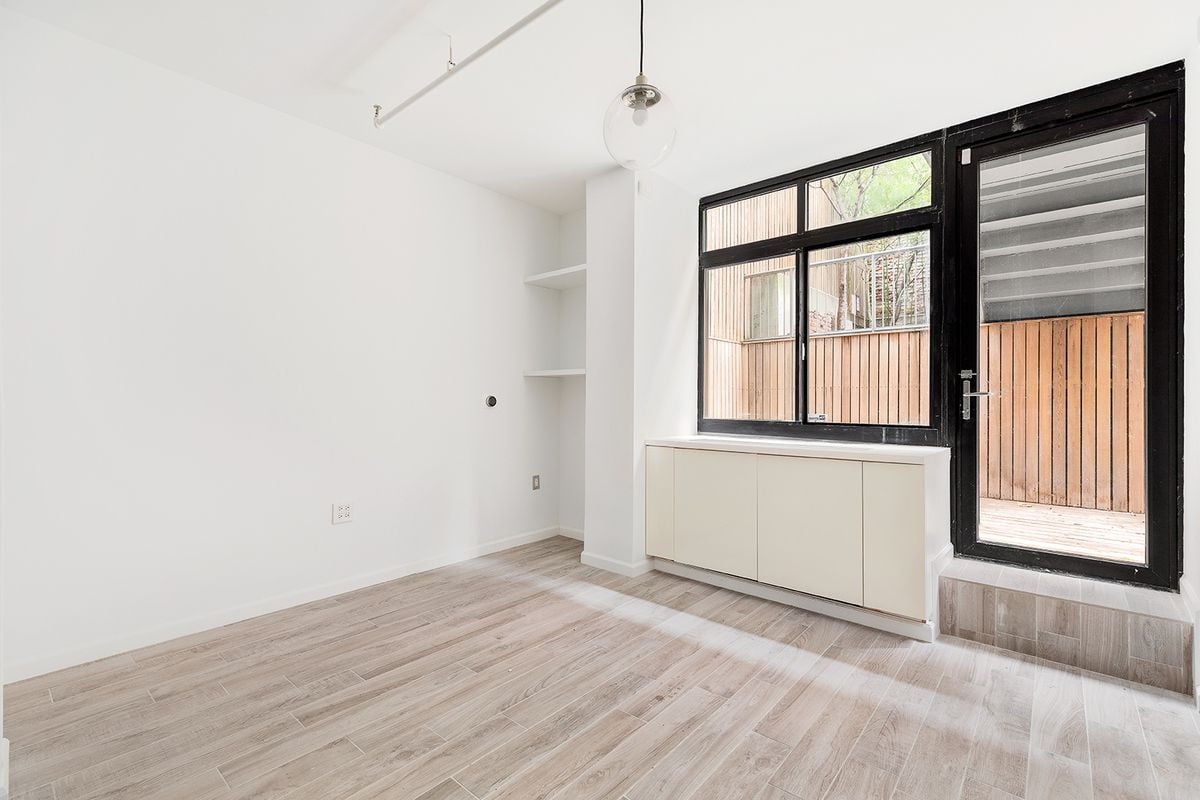
Consider basement apartments
If your income is above the required minimums for the housing lottery and you’re looking for more space on a tight budget, it may be time to seek out a traditionally less desirable unit. There’s renewed interest in basement apartments as a solution to the city’s affordability crisis. Recent rule changes could help bring hundreds of basements up to code. Making sure the unit meets requirements for ventilation, light, sanitation, and exits is a priority. Kee suggests finding "a transition apartment, someone who is expecting approval. Plan to rent that apartment once it gets approval.”
If you’re looking to buy, a basement duplex is going to be a more affordable option in any neighborhood. For example, a three-bedroom duplex with a basement in Chinatown (pictured above) recently sold for around $2,230,000—half the cost of the last above-grade unit of similar size to sell in the building, which changed hands in 2016 for $4,300,000.
According to data from StreetEasy, newly built apartments in Manhattan and Brooklyn with below-grade space were 21 percent cheaper per square foot than other units in the same buildings.
Lose some amenities
If you’ve always lived in a building with an elevator, it may be time to give up some amenities. Maybe your building has a gym included or it was considered one of the newer buildings in the neighborhood when it was built 10 years ago. Kee suggests "looking for some of the older buildings that are walk-ups with no frills." She says people often don't use the amenities they are paying for.
"There are so many people who say they must have a roof deck and then say it’s too cold to go out there eight months of the year," she says.
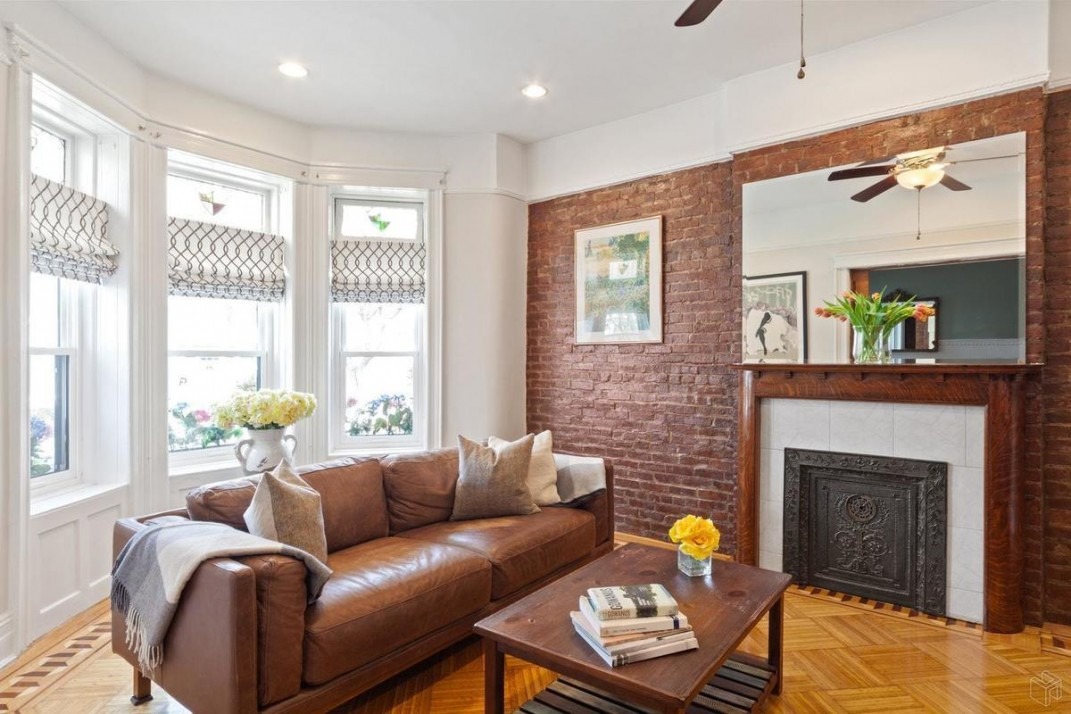
Take on a different commute
Moving further out isn't necessarily going to solve your housing woes. It's where you move that makes the difference.
"People used to move to Park Slope or Williamsburg because they couldn’t afford Manhattan," Kee says, but those areas are no longer known for deals. She insists there are still places where you can "stretch out" like Grand Concourse in the South Bronx, Inwood in Manhattan, certain parts of Queens, and the "slightly untapped" neighborhood of Bay Ridge in Brooklyn where she says the 40-minute ferry service to Manhattan is helping make it more attractive. Inwood topped Brick's list of most affordable neighborhoods for buyers last year.
Brokers also recommend Bay Ridge be on your radar if you're looking for a townhouse. Likewise, Ocean Hill, east of Bed-Stuy. If you're worried about leaving friends behind, take heart that you may just be the leader of the pack. If you're a first-time buyer without dependents, StreetEasy data suggests areas with the most studio and one-bedroom listings under $400,000 are Forest Hills, Rego Park and Jackson Heights in Queens; Bay Ridge, and Sheepshead Bay in Brooklyn; Riverdale in the Bronx; and Murray Hill and the Upper East Side in Manhattan.
Ride it out and keep renting
It's hard to remember when you're in the thick of parenting that your living room won't always look like a ball pit. Kids grow up. They even leave home. To maximize the square footage you have while they're young, consider creative solutions to accommodate the family like maximizing closet space, de-cluttering, and using walls and door frames in unexpected ways.
Simon Brady, a certified financial planner and founder of Anglia Advisors, warns against taking on a real estate obligation too early and certainly while you still have student loan debt. He says clients come to him saying they'd rather pay a mortgage than a landlord but that "attitude fails to take into account the huge cost of ownership, whether it’s in assessments, taxes, homeowner's insurance, maintenance, or mortgage interest."
Brady says buyers also pay a price when they lock up their funds in a down payment. In many cases, it's better to put the money earmarked for a down payment into a low-risk, high-yield savings account, until you are absolutely sure you can take on the financial responsibility of buying an apartment. In the meantime he says, "take on a roommate, [while] none of us want to do that, it could be a way of riding it out."
Commit to a co-op
If you are ready for home ownership, co-ops are generally cheaper than condos. Co-ops, where buyers own shares in a corporation rather than have the deed to a specific unit, make up about 75 percent of New York City's apartment inventory compared to condos.
"There’s more availability with co-ops and lots of people don’t realize how different the closing costs are when buying a condo over a co-op," says Kee. Co-ops usually require owners to live in the units so it won't work if you want to rent it out, but Kee says "if you are really looking for a home," a co-op is the most affordable option.
Still, make sure you understand what you are getting into when you buy a co-op—there are an assortment of fees, including charges that do not apply to condos.
Apartments with expandable space
If you're comfortable taking on a renovation, another strategy might be to buying a unit that can be reconfigured into a larger one. Perla Cuevas and her husband achieved their housing goals with this approach in a co-op in Kensington. Cuevas has two toddlers and found a one-bedroom unit which they could convert into a two bedroom. Kee suggests working with a broker to zero in on the layout of a prospective apartment. In real estate jargon, there's a unit called a Junior Four, which is a one-bedroom with some extra space to play around with—but not a fully-fledged second bedroom.
A 'Classic Six' or 'Classic Seven' are larger versions of the Junior Four. They are generally prewar units with layouts that allow a buyer to open up the usable space of the apartment.
A purchase with rental income (and caveats)
Another plan might be to look for a two-family unit and become a landlord and owner at the same time. Kee says about 20 percent of her clients work to structure their home ownership like this, seeking alternative financing for a two- or three-family building and offsetting their costs by renting out the other unit.
However, Brady is deeply skeptical of this idea and points out it likely involves a bigger down payment, tax on the rental income, and the stress and financial exposure associated with becoming a landlord.
"Historically, residential real estate is one of the worst investments. If it takes a downturn as it is now, it could affect your net worth," he says.
Still, Lauren Bennett, a real estate broker with Corcoran says she recently arranged exactly this kind of purchase for clients in Queens. The couple wanted a unit in Long Island City but by searching a little further out, found a two-family in Sunnyside. By balancing their monthly payments with the second unit as a rental income, they offset their carrying costs and have "a townhouse that is twice as big as what they were looking at in Long Island City and long term, once they’ve paid down their debt, they have the opportunity to occupy entirely—and they have outdoor space," Bennett says.
Alternative lending options
If your main hurdle to homeownership is coming up with the required 10 or 20 percent down payment on an apartment, a state lending program can help renters get onto the property ladder with units below NYC's median sales price. Buyers need to meet certain income levels and the property prices are capped, but the SONYMA loan program makes it possible to buy with a down payment of 3 percent of the purchase price.
You Might Also Like




